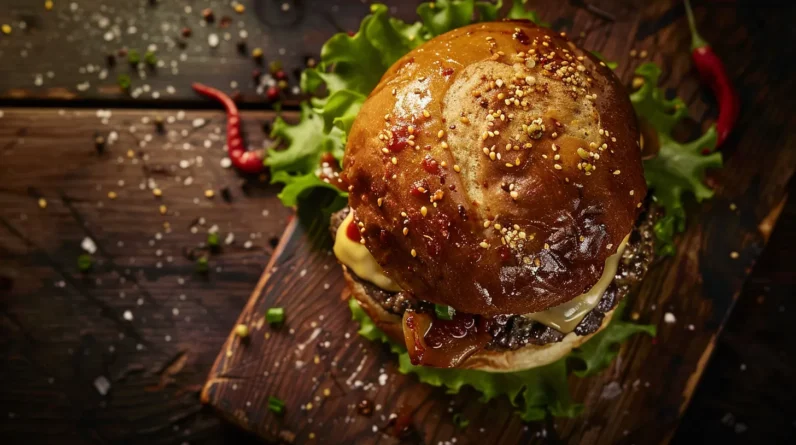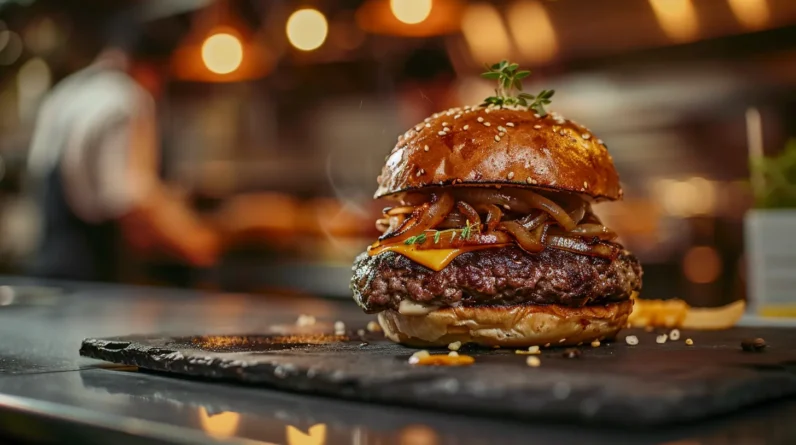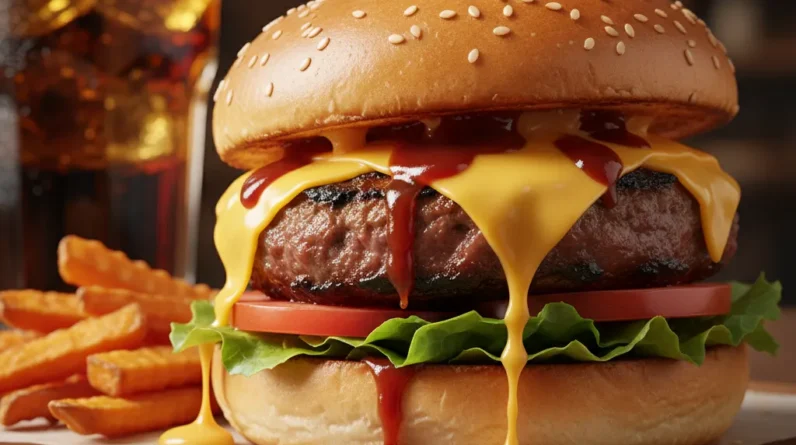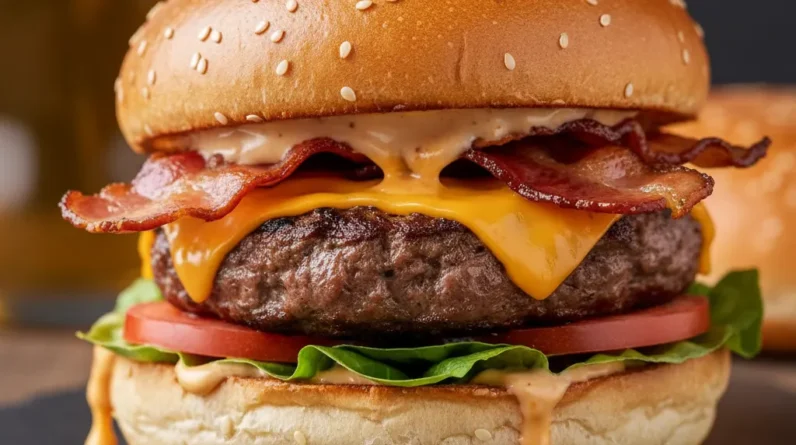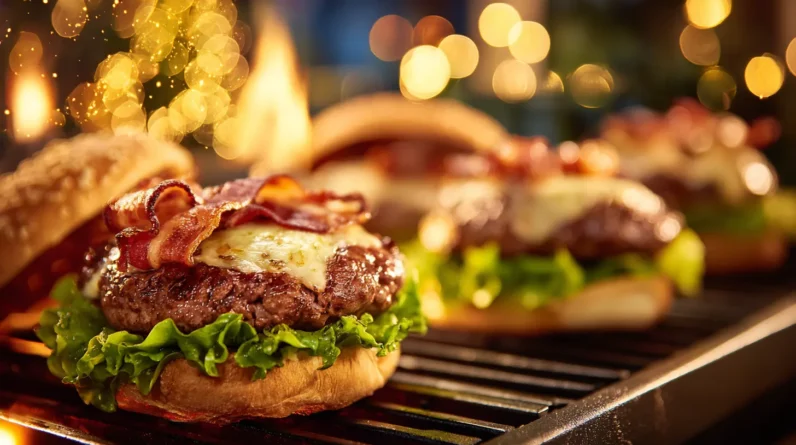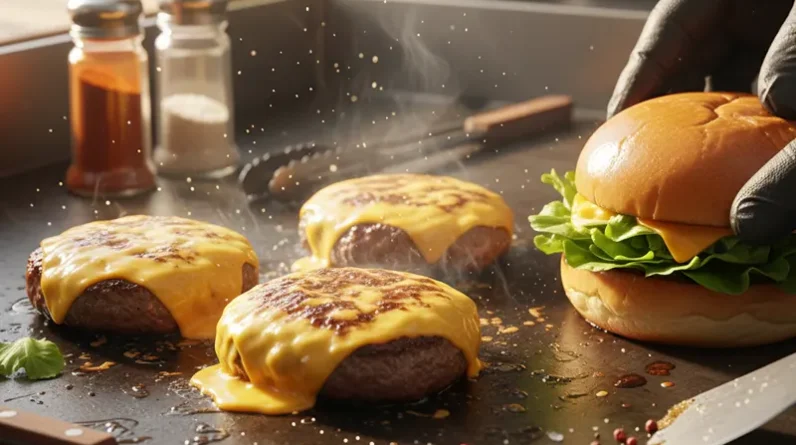
We’re ditching the usual burger blues by perfecting our meat blend, grill setup, and cooking temps. It’s all about harmony – chuck, brisket, and short rib unite for flavor. A two-zone fire and 80/20 lean-to-fat ratio are non-negotiables. Now, if you want to turn your backyard cookouts into flavor sensations, you’ll need to get the inside scoop on the art of burger crafting, and trust us, it’s about to get real.
Meat Selection and Patty Preparation
We’re diving into the world of meat selection and patty preparation, and let’s be real, it’s a minefield out there. We’re talking meat blending, where chuck, brisket, and short rib come together in perfect harmony. Patty forming is an art, requiring a delicate touch to avoid compacting the meat. We aim for an 80/20 lean-to-fat ratio, as too lean or too fatty can be disastrous. With the right balance, we can create burgers that are both juicy and flavorful, making meat blending and patty forming vital steps in our pursuit of burger mastery.
Grill Setup and Heat Management
Now that we’ve got our patties formed and our meat selection on point, it’s time to tackle the often-overlooked but ridiculously important aspect of grill setup and heat management. We’re talking grill maintenance, people, and it’s not just about slapping some burgers on the grill. Proper setup includes a clean grill, oiled grates, and a two-zone fire for Smoke control. Don’t even get us started on temperature control – it’s vital for achieving that perfect sear. We use a charcoal chimney starter for even ignition and a lid thermometer for accuracy. It’s time to get serious about grill setup.
Cooking Time and Temperature Guidelines
As we plunge into the nitty-gritty of cooking time and temperature guidelines, it’s shocking how many people still can’t seem to get it right – and by “it,” I mean cooking a decent beef burger without turning it into a charred, tasteless patty. We’re using thermometers to guarantee accuracy, inserting probes into the thickest part of the patty. Cooking techniques matter, with medium-high heat and multiple flips promoting even cooking. We’re talking 130-135°F for medium rare, achieved through precise thermometer usage and controlled cooking times. Anything less is careless, anything more is overkill.
Flavor Enhancements and Seasoning
Because a decent beef burger demands more than just a cursory sprinkle of salt and pepper, let’s get down to business with flavor enhancements and seasoning. We’re not talking about bland, mass-produced seasoning blends here. To create complex flavor profiles, we use seasoning blends with a balance of salt, savory, smoky, sweet, and heat elements. Smoked paprika and mustard powder add depth, while brown sugar introduces nuanced sweetness. We prefer homemade seasoning blends for precise control over flavor profiles, but store-bought options like McCormick Grill Mates work too, with a bit of tweaking. Proper seasoning is key.
Cheese and Toppings
We’re not exactly breaking new ground by saying cheese is a crucial component of a killer burger, but let’s plunge into the nitty-gritty anyway. We expect precision with cheese melting, as it elevates the patty. Topping combinations can make or break the experience. Pairing creamy cheeses like brie with fresh toppings creates balance, while sharper cheeses complement smoky or salty additions. We demand attention to detail, considering melting rates and flavor intensity. Strategic combinations, such as blue cheese with caramelized onions, add complexity. Mastering cheese melting and topping combinations is key to crafting a truly exceptional burger.
Presentation and Serving Suggestions
Now that we’ve nailed the art of balancing cheese and toppings, it’s time to step up our presentation game – after all, a sloppy, thrown-together burger is a major turnoff. We’re talking burger aesthetics here, people. Our serving strategies should enhance the visual appeal, not detract from it. We use cast iron grids for sharp sear marks and arrange burgers on elevated platters for dimension. Wooden boards, colorful parchment, and neatly stacked ingredients all contribute to a polished look. Let’s master the art of presentation to elevate our burgers from basic to brilliant, with thoughtful serving strategies that wow.
Conclusion
We’ve given you the lowdown, now it’s time to put it into practice. Don’t be a rookie, practice makes perfect, after all. As the saying goes, “you can’t wing it and expect a masterpiece” – so follow our tips or you’ll end up with a patty that’s a hot mess, and trust us, nobody likes a bad burger.


